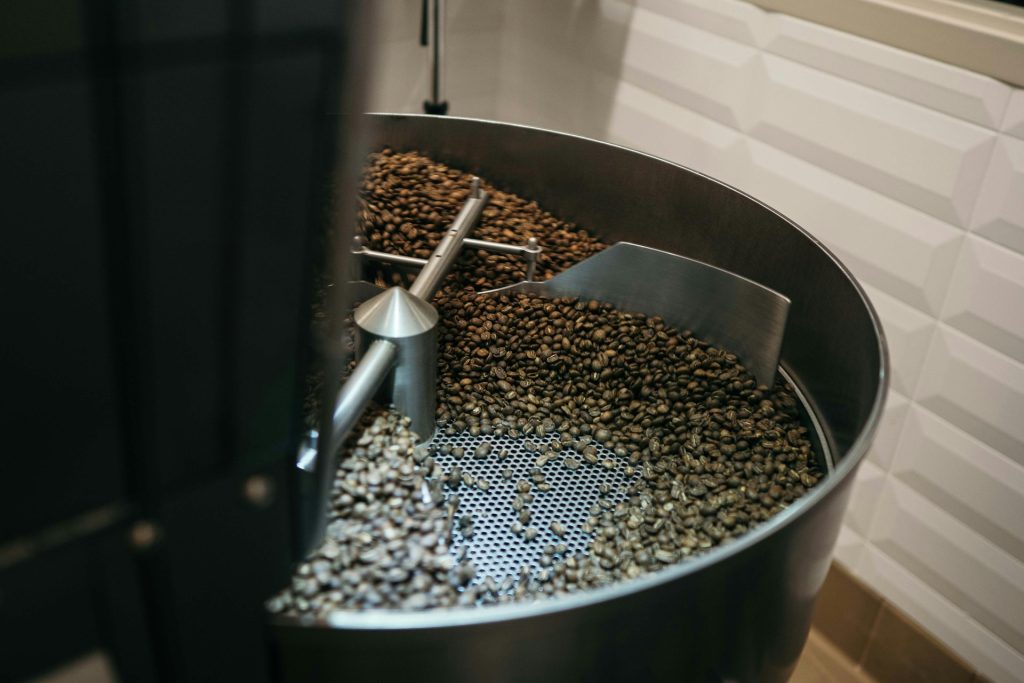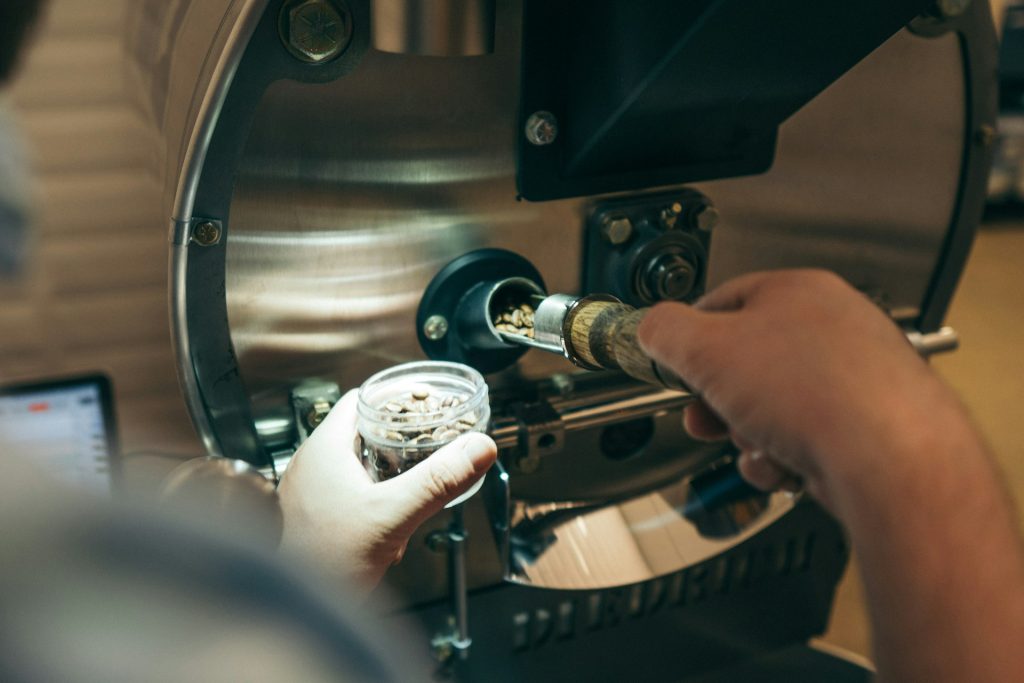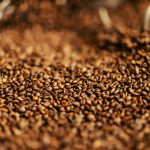Table of Contents
Embarking on the journey of roasting coffee beans at home opens up a world of customization and flavor that can’t be found in store-bought varieties. It’s a craft that requires precision, from managing temperature control to prevent burn marks to understanding the stages of roasting that transform the beans from the drying stage to the browning stage. Whether you’re an experienced barista or a novice, mastering the degree of roast to suit your palate is a rewarding experience.
During a typical bean roasting session, the transformation is profound. Within 10 minutes, the beans undergo a remarkable change, offering the home roaster complete control over the roasting process. Roasting machines range from simple baking trays to sophisticated popcorn poppers, each providing a unique path to achieving the perfect roast. With dedication and a bit of practice, you’ll be savoring the rich, full-bodied flavors of your own hand-roasted coffee.
The Essentials of Home Coffee Roasting
Home coffee roasting is an art form that marries tradition with technology, providing coffee enthusiasts with the tools to express their love for the beverage. Essential to this process is temperature control, which ensures each stage of roasting reaches its full potential without overcooking the beans or causing unwanted burn marks.
Selecting the Ideal Green Coffee Beans
To begin, selecting high-quality green coffee beans lays the foundation for a successful roast. Stored properly in storage containers shielded from direct sunlight, unroasted coffee beans can maintain their freshness for up to a year. The choice of bean is paramount, as it determines the flavor profiles that will emerge through roasting. It’s important to embrace the learning curve and experiment with various beans to discover the tastes and aromas that resonate with your palate.
Start with a diverse selection of green coffee beans to explore the spectrum of flavors that coffee has to offer. Sample packs are an excellent way to experience a range of profiles without committing to a large batch. Remember, the first few attempts at roasting may not be perfect, but each session is a step toward finding your ideal cup. As you hone your skills, proper storage of your beans will continue to be essential, keeping them fresh and ready for your next roast.
Understanding the Roasting Process
The roasting process is a transformative experience for both the bean and the roaster. It begins with a thorough understanding of the chemical reactions that occur as heat is applied. These reactions change the green coffee beans’ physical and chemical properties, leading to the development of complex flavors and aromas. Each step, from the initial drying phase to the final development stage, is crucial in shaping the final product.
Roasters must pay close attention to the beans throughout the process, adjusting heat and timing to achieve the desired outcome. The transformation is not just seen but heard as the beans crack and pop, signaling their progression through the stages. This auditory cue is just as important as the visual changes, guiding the roaster in perfecting the batch.
Recognizing the First Crack
One of the pivotal moments in coffee roasting is recognizing the first crack. This audible signal marks the transition to the light roast stage and is a critical point in determining the flavor profile of the coffee. It’s an indication that the beans have expanded and the moisture within them has reached a point of release, creating a distinct popping sound. The first crack is a milestone that every roaster eagerly anticipates as it heralds the onset of the development of the coffee’s unique taste.
Following the first crack, the beans enter the medium roast phase. The time between the first and the second crack is crucial, as it determines the intensity of the roast. A shorter period results in a lighter, more acidic coffee, while extending this time leads to a deeper, more robust flavor. The roaster’s skill lies in timing this stage perfectly to achieve the desired roast.
Gauging the Desired Level of Roast
Every coffee enthusiast has a preference for their coffee’s roast level. The desired roast affects not only the color and size of the beans but also their flavor and aroma profiles. Light roast beans are typically lighter in color with a milder flavor, while darker roasts offer a bolder taste. The roaster’s task is to monitor the roast levels closely, stopping the process at the precise moment that aligns with the desired roast profile.
Whether you prefer a light roast with its bright and fruity notes or a dark roast with its bold and smoky essence, achieving the perfect level of roast requires attention to detail and a good understanding of the roasting process. Tools like digital thermometers are invaluable for measuring temperatures and ensuring consistency across batches. With experience, you’ll learn to fine-tune the process to produce coffee that meets your individual taste.

Equipment Options for the Home Roaster
For the home roaster, a variety of equipment options exist to roast your own coffee. From traditional stovetop methods to modern, dedicated roasting machines, the choice of tool can influence the consistency and flavor of the fresh coffee. The beans are roasted evenly using these methods, each offering its own set of advantages for crafting that perfect cup.
Traditional Methods vs Modern Gadgets
Traditional bean roasting methods have stood the test of time, but modern gadgets offer convenience and precision. Whether you choose a stovetop pan or a high-tech roaster, the journey of coffee roasting is both a science and an art.
Stovetop Roasting Techniques
Stovetop roasting is a hands-on approach that immerses you in the coffee roasting journey. By engaging with green coffee beans directly over the flame, you develop a deeper understanding of the heat’s effect on the beans. This technique requires constant attention, stirring, and temperature monitoring to ensure an even roast without scorching the beans.
For those seeking a traditional roasting method, the stovetop offers a connection to the past and an appreciation for the artisanal aspect of coffee making. It’s a method that rewards patience and practice, allowing the roaster to truly craft their signature blend.
Using a Dedicated Home Coffee Roaster
Dedicated home coffee roasters represent the pinnacle of convenience and control in roasting methods. These machines are designed to roast your own coffee with precision, providing an even roast and a consistent batch every time. The fresh coffee that emerges from these roasters is the result of carefully controlled temperature and timing tailored to the beans’ specific needs.
As the beans are roasted, the home roaster can adjust settings to suit personal preferences, making this method ideal for those who value consistency and flavor above all. With a dedicated machine, the art of coffee roasting becomes accessible to all, ensuring each cup is as fresh and flavorful as the last.
Alternative Roasting Methods You Can Try
When roasting your own coffee, don’t be afraid to get creative. Alternative methods like using a hot air fryer or a popcorn popper can yield surprising results, introducing new flavor dimensions to your raw coffee beans.
Transforming a Popcorn Machine for Coffee Roasting
Utilizing a popcorn machine for coffee roasting is an inventive twist on a common household appliance. This method avoids burn marks and ensures an even roast by constantly agitating the beans. It’s an approach that brings a playful element to the stage of roasting, making it an accessible option for home roasters looking for an alternative to traditional methods.
As the popcorn popper swirls the beans, the heat circulates uniformly, creating a consistent roast. This method is not only efficient but also adds an element of fun to the roasting process, allowing the roaster to experiment with different roast profiles.
Oven Roasting: Is It Worth It?
Oven roasting is a method that allows for roasting coffee in the oven with a batch of green coffee beans spread thinly on a baking tray. This method requires careful attention to ensure that the layer of beans roasts evenly, without neglecting any single bean.
While oven roasting can be less precise than other methods, it is still a viable option for those who want to try roasting at home without specialized equipment. The key to success is regular stirring and monitoring to achieve an even roast throughout the batch.
Step-By-Step Home Roasting Guide
Roasting coffee at home is an immersive experience that combines the anticipation of a light roast with the excitement of chemical reactions unfolding within the beans. Aspiring coffee roasters can choose from a variety of methods, each offering unique results.
Preparing for Your Roasting Session
Before you begin, it’s important to set up your roasting space with good ventilation to handle the smoke and aromas. Ensure you have all the necessary equipment on hand, from coffee roasters to baking paper, and that your chosen method of roasting is ready to go. Deciding on the roast level—whether a light roast or a medium roast—and preparing your beans are crucial steps in the process.
Once the coffee beans have reached the light roast stage, listen for the audible crack that signals the beginning of the development phase. As roasting progresses, use a metal colander to agitate the beans and remove any remaining chaff. This preparation sets the stage for a successful roasting session that culminates in the rich, complex flavor profiles coffee lovers cherish.
Continuously Moving the Beans
Ensuring an even roast when roasting coffee beans at home is crucial, and that requires keeping the beans in constant motion. Just as one might observe in a coffee shop, where large roasters turn the beans steadily, replicating this movement on a smaller scale is key. Whether you’re using a stovetop method or a dedicated roaster, agitation prevents the beans from scorching and promotes a uniform color and flavor development.
Techniques vary depending on the equipment, but the principle remains the same: keep the beans moving. In a pan, this may mean a continuous stirring or shaking. An internal mechanism will take care of this for you in a more automated home roaster. This motion mimics the commercial process on a smaller scale, ensuring each bean receives equal exposure to heat and transforms into a perfectly roasted gem.
Cooling Down Post-Roast
Once the beans have reached the desired roast level, the immediate next step is to cool them quickly. This halts the roasting process, locking in the delicate flavors and oils that define the bean’s character. The cooling should be as swift as the heat application to avoid the continuation of roasting, which can lead to the overdevelopment of the beans. By spreading them out on a cool surface or using a fan to disperse the heat, the beans begin to cool immediately.
After cooling, the beans should have ceased their roasting journey and be ready for the next stages of their use. It’s at this point that the beans’ true qualities have been set, and they’re prepared for storage or immediate grinding. Rapid cooling is not just a step in the process; it’s a safeguard for the flavor profile you’ve worked so hard to create.
Post-Roasting Tips and Tricks
After roasting, understanding the next steps will enhance the quality of your coffee. Proper handling post-roast ensures that the flavor, aroma, and freshness of the beans are maintained until they are ready for brewing.
Proper Storage for Maximum Freshness
Storing coffee beans appropriately after roasting is crucial for preserving their flavor profile, particularly if aiming for a darker roast. After roasting, the beans continue to emit gases for a short while, so an airtight container with a one-way valve is recommended. This type of container allows gases to escape without letting air in, which can degrade the beans’ quality. Keeping beans in a cool, dark place further helps maintain their freshness.
Brewing the Perfect Cup With Your Roasted Beans
The ultimate reward for roasting coffee at home is brewing a cup that exhibits the full potential of your efforts. To achieve this, it’s essential to let the roasted beans rest for a couple of days before brewing. This waiting period allows the flavors and aromas to peak, offering a more complex and enjoyable cup of coffee. The right grind size, water temperature, and brewing method will vary depending on the coffee and the desired outcome, but starting with a rested, freshly roasted bean is key.

Avoiding Common Pitfalls in Coffee Roasting
One common issue in home roasting is the appearance of burn marks on the beans. These are often the result of inconsistent heat or over-roasting, which can spoil the taste of the coffee. Being vigilant during the roasting process and keeping the beans moving can help prevent this problem and ensure a smooth, even roast.
The Truth About Expensive Roasting Software
While roasting software can be beneficial for tracking and repeating successful roasts, it may not be necessary for everyone’s coffee roasting journey. The casual home roaster may find that simple note-taking and attention to the process yield satisfying results without the need for costly investments. The focus should be on learning and enjoying the roasting experience rather than on acquiring sophisticated technology.
Moreover, the essentials of roasting can be mastered with practice and observation. Expensive software can offer precise control and data, but the art of roasting is often best learned through hands-on experience, trial, and error. Over time, you’ll develop an intuition for your roasting preferences, which can be just as valuable as any high-end equipment.
The Real Cost-Benefit Analysis of Home Roasting
Home coffee roasting can be a rewarding hobby, but it’s important to consider the cost versus the benefits. Initially, there may be expenses associated with acquiring the necessary equipment, whether it’s a simple skillet or a sophisticated roaster. However, the long-term savings of roasting your own beans compared to purchasing pre-roasted coffee can be significant.
Additionally, the freshness and quality of home-roasted coffee can far surpass that of store-bought varieties. The personal satisfaction of crafting your roast, experimenting with different beans, and customizing flavors to your liking can make home roasting well worth the investment. It’s a matter of weighing the initial costs against the pleasure and savings you’ll enjoy over time.
Infusing Passion into Every Bean: A Roasting Retrospective
Roasting coffee is not merely a process but an art form where the roaster imbues each bean with a touch of personal passion. The transformation of green coffee beans into aromatic treasures is a journey that reshapes the very structure of the bean, releasing complex flavors and textures. Choosing the right roasting equipment is critical, as it allows for the precise application of heat that is necessary to coax out the bean’s fullest potential. With every roast, a deeper connection is formed with the craft, turning each batch into a unique expression of the roaster’s dedication to excellence.

I’m Audrey, a dedicated mother of teenagers with an insatiable love for coffee. On BeanBrewLove.com, I intertwine my need for caffeine with reflections on life. Whether expressing a nostalgic sentiment or injecting a hint of sarcasm, my blog is a reservoir of coffee culture, brewing techniques, and global coffee reviews.





1 thought on “How to Roast Coffee Beans: Master the Art of Home Roasting”